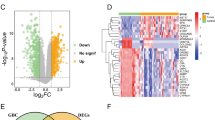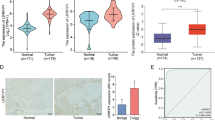Abstract
Pancreatic cancer, the fourth most common cause of cancer-related deaths, is one of the most aggressive and devastating human malignancies with increasing incidence worldwide. To date, surgical resection is the only potentially curative therapy available for pancreatic cancer patients. Early diagnosis of pancreatic tumors is difficult, and hence, nearly 80% of patients cannot receive surgical resection. Natural products have always been a vital source for novel compounds for cancer treatment. The naturally occurring prenylated xanthone, gambogic acid, has been previously shown to exert potent anticancer, anti-inflammatory, apoptotic, antiangiogenic, and antioxidant activities. However, to our knowledge, there have been no specific studies showing its effect on the whole-genome expression in pancreatic cancer cells. Here, the anticancer activity of gambogic acid toward a panel of pancreatic cancer cells with different differentiation stages has been evaluated. Additionally, a whole-genome transcription profiling study was performed in order to identify possible candidate players modulating the antitumor effect of gambogic acid on pancreatic cancer cells. Expression analysis results showed that the pancreatic adenocarcinoma signaling pathway was specifically affected upon gambogic acid treatment. Moreover, the growth inhibitory effect of gambogic acid on pancreatic cancer cells was modulated through up-regulation of DDIT3, DUSP1, and DUSP5 and down-regulation of ALDOA, TOP2A, and ATG4B. The present work is a starting point for the generation of hypotheses on significantly regulated candidate key player genes and for a detailed dissection of the potential role of each individual gene for the activity of gambogic acid on pancreatic cancer.





Similar content being viewed by others
References
Ahmed MF, Youns M, Belal A (2016) Design, synthesis, molecular docking and anti-breast cancer activity of novel quinazolinones targeting estrogen receptor alpha. Acta Pol Pharm 73:115–127
Alhamdani MS, Youns M, Buchholz M, Gress TM, Beckers MC, Marechal D, Bauer A, Schroder C, Hoheisel JD (2012) Immunoassay-based proteome profiling of 24 pancreatic cancer cell lines. J Proteome 75:3747–3759
Berger JM, Gamblin SJ, Harrison SC, Wang JC (1996) Structure and mechanism of DNA topoisomerase II. Nature 379:225–232
Bi M, Naczki C, Koritzinsky M, Fels D, Blais J, Hu N, Harding H, Novoa I, Varia M, Raleigh J, Scheuner D, Kaufman RJ, Bell J, Ron D, Wouters BG, Koumenis C (2005) ER stress-regulated translation increases tolerance to extreme hypoxia and promotes tumor growth. EMBO J 24:3470–3481
Chung MY, Lim TG, Lee KW (2013) Molecular mechanisms of chemopreventive phytochemicals against gastroenterological cancer development. World J Gastroenterol 19:984–993
de Souza Rocha Simonini P, Breiling A, Gupta N, Malekpour M, Youns M, Omranipour R, Malekpour F, Volinia S, Croce CM, Najmabadi H, Diederichs S, Sahin O, Mayer D, Lyko F, Hoheisel JD, Riazalhosseini Y (2010) Epigenetically deregulated microRNA-375 is involved in a positive feedback loop with estrogen receptor alpha in breast cancer cells. Cancer Res 70:9175–9184
Echavarria R, Hussain SN (2013) Regulation of angiopoietin-1/Tie-2 receptor signaling in endothelial cells by dual-specificity phosphatases 1, 4, and 5. J Am Heart Assoc 2:e000571
Fatahala SS, Mohamed MS, Youns M, Abd-El Hameed RH (2017) Synthesis and Evaluation of Cytotoxic Activity of Some Pyrroles and Fused Pyrroles. Anticancer Agents Med Chem 17(7):1014–1025
Galamb O, Spisak S, Sipos F, Toth K, Solymosi N, Wichmann B, Krenacs T, Valcz G, Tulassay Z, Molnar B (2010, 2010) Reversal of gene expression changes in the colorectal normal-adenoma pathway by NS398 selective COX2 inhibitor. Br J Cancer. https://doi.org/10.1038/sjbjc6605515
Gong Y, Zhang B, Liao Y, Tang Y, Mai C, Chen T, Tang H (2017) Serum insulin-like growth factor axis and the risk of pancreatic cancer: systematic review and meta-analysis. Nutrients 9(4). https://doi.org/10.3390/nu9040394
Ishaq M, Khan MA, Sharma K, Sharma G, Dutta RK, Majumdar S (2014) Gambogic acid induced oxidative stress dependent caspase activation regulates both apoptosis and autophagy by targeting various key molecules (NF-kappaB, Beclin-1, p62 and NBR1) in human bladder cancer cells. Biochim Biophys Acta 1840:3374–3384
Ji S, Zhang B, Liu J, Qin Y, Liang C, Shi S, Jin K, Liang D, Xu W, Xu H, Wang W, Wu C, Liu L, Liu C, Xu J, Ni Q, Yu X (2016) ALDOA functions as an oncogene in the highly metastatic pancreatic cancer. Cancer Lett 374:127–135
Kajita E, Moriwaki J, Yatsuki H, Hori K, Miura K, Hirai M, Shiokawa K (2001) Quantitative expression studies of aldolase A, B and C genes in developing embryos and adult tissues of Xenopus laevis. Mech Dev 102:283–287
Kashyap D, Mondal R, Tuli HS, Kumar G, Sharma AK (2016) Molecular targets of gambogic acid in cancer: recent trends and advancements. Tumour Biol 37:12915–12925
Kim DG, You KR, Liu MJ, Choi YK, Won YS (2002) GADD153-mediated anticancer effects of N-(4-hydroxyphenyl)retinamide on human hepatoma cells. J Biol Chem 277:38930–38938
Kuete V, Krusche B, Youns M, Voukeng I, Fankam AG, Tankeo S, Lacmata S, Efferth T (2011) Cytotoxicity of some Cameroonian spices and selected medicinal plant extracts. J Ethnopharmacol 134:803–812
Kusakabe T, Motoki K, Hori K (1997) Mode of interactions of human aldolase isozymes with cytoskeletons. Arch Biochem Biophys 344:184–193
Lee KW, Bode AM, Dong Z (2011) Molecular targets of phytochemicals for cancer prevention. Nat Rev Cancer 11:211–218
Li C, Qi Q, Lu N, Dai Q, Li F, Wang X, You Q, Guo Q (2012) Gambogic acid promotes apoptosis and resistance to metastatic potential in MDA-MB-231 human breast carcinoma cells. Biochemistry and cell biology. Biochim Biol Cell 90:718–730
Luo GX, Cai J, Lin JZ, Luo WS, Luo HS, Jiang YY, Zhang Y (2012) Autophagy inhibition promotes gambogic acid-induced suppression of growth and apoptosis in glioblastoma cells. Asian Pac J Cancer Prev 13:6211–6216
Mulyaningsih S, Youns M, El-Readi MZ, Ashour ML, Nibret E, Sporer F, Herrmann F, Reichling J, Wink M (2010) Biological activity of the essential oil of Kadsura longipedunculata (Schisandraceae) and its major components. J Pharm Pharmacol 62:1037–1044
Park MS, Kim NH, Kang CW, Oh CW, Kim GD (2015) Antimetastatic effects of gambogic acid are mediated via the actin cytoskeleton and NF-kappaB pathways in SK-HEP1 cells. Drug Dev Res 76:132–142
Qi Q, Lu N, Li C, Zhao J, Liu W, You Q, Guo Q (2015) Involvement of RECK in gambogic acid induced anti-invasive effect in A549 human lung carcinoma cells. Mol Carcinog 54(Suppl 1):E13–E25
Qin Y, Meng L, Hu C, Duan W, Zuo Z, Lin L, Zhang X, Ding J (2007) Gambogic acid inhibits the catalytic activity of human topoisomerase IIα by binding to its ATPase domain. Mol Cancer Ther 6:2429–2440
Ramachandran C, Rodriguez S, Ramachandran R, Raveendran Nair PK, Fonseca H, Khatib Z, Escalon E, Melnick SJ (2005) Expression profiles of apoptotic genes induced by curcumin in human breast cancer and mammary epithelial cell lines. Anticancer Res 25:3293–3302
Rothe K, Lin H, Lin KB, Leung A, Wang HM, Malekesmaeili M, Brinkman RR, Forrest DL, Gorski SM, Jiang X (2014) The core autophagy protein ATG4B is a potential biomarker and therapeutic target in CML stem/progenitor cells. Blood 123:3622–3634
Saeed LM, Mahmood M, Pyrek SJ, Fahmi T, Xu Y, Mustafa T, Nima ZA, Bratton SM, Casciano D, Dervishi E, Radominska-Pandya A, Biris AS (2014) Single-walled carbon nanotube and graphene nanodelivery of gambogic acid increases its cytotoxicity in breast and pancreatic cancer cells. J Appl Toxicol 34:1188–1199
Schmidt BH, Osheroff N, Berger JM (2012) Structure of a topoisomerase II-DNA-nucleotide complex reveals a new control mechanism for ATPase activity. Nat Struct Mol Biol 19:1147–1154
Shin SH, Park SY, Kang GH (2013) Down-regulation of dual-specificity phosphatase 5 in gastric cancer by promoter CpG island hypermethylation and its potential role in carcinogenesis. Am J Pathol 182:1275–1285
Siegel RL, Miller KD, Jemal A (2016) Cancer statistics, 2016. CA Cancer J Clin 66:7–30
Siegel RL, Miller KD, Jemal A (2017) Cancer statistics, 2017. CA Cancer J Clin 67:7–30
Strimpakos A, Saif MW, Syrigos KN (2008) Pancreatic cancer: from molecular pathogenesis to targeted therapy. Cancer Metastasis Rev 27:495–522
Torres Salazar A, Hoheisel J, Youns M, Wink M (2011) Anti-inflammatory and anti-cancer activities of essential oils and their biological constituents. Int J Clin Pharmacol Ther 49:93–95
Tuli HS, Sandhu SS, Sharma AK (2014) Pharmacological and therapeutic potential of Cordyceps with special reference to Cordycepin. 3 Biotech 4:1–12
Wang X, Chen W (2012) Gambogic acid is a novel anti-cancer agent that inhibits cell proliferation, angiogenesis and metastasis. Anti Cancer Agents Med Chem 12:994–1000
Wang Z, Reinach PS, Zhang F, Vellonen KS, Urtti A, Turner H, Wolosin JM (2010) DUSP5 and DUSP6 modulate corneal epithelial cell proliferation. Mol Vis 16:1696–1704
Wang C, Zhang H, Chen Y, Shi F, Chen B (2012) Gambogic acid-loaded magnetic Fe(3)O(4) nanoparticles inhibit Panc-1 pancreatic cancer cell proliferation and migration by inactivating transcription factor ETS1. Int J Nanomedicine 7:781–787
Wu ZQ, Guo QL, You QD, Zhao L, Gu HY (2004) Gambogic acid inhibits proliferation of human lung carcinoma SPC-A1 cells in vivo and in vitro and represses telomerase activity and telomerase reverse transcriptase mRNA expression in the cells. Biol Pharm Bull 27:1769–1774
Xia G, Wang H, Song Z, Meng Q, Huang X, Huang X (2017) Gambogic acid sensitizes gemcitabine efficacy in pancreatic cancer by reducing the expression of ribonucleotide reductase subunit-M2 (RRM2). J Exp Clin Cancer Res 36:107
Xu X, Liu Y, Wang L, He J, Zhang H, Chen X, Li Y, Yang J, Tao J (2009) Gambogic acid induces apoptosis by regulating the expression of Bax and Bcl-2 and enhancing caspase-3 activity in human malignant melanoma A375 cells. Int J Dermatol 48:186–192
Yi T, Yi Z, Cho SG, Luo J, Pandey MK, Aggarwal BB, Liu M (2008) Gambogic acid inhibits angiogenesis and prostate tumor growth by suppressing vascular endothelial growth factor receptor 2 signaling. Cancer Res 68:1843–1850
Youns M, Abdel Halim Hegazy W (2017) The natural flavonoid fisetin inhibits cellular proliferation of hepatic, colorectal, and pancreatic cancer cells through modulation of multiple signaling pathways. PLoS One 12:e0169335
Youns M, Fathy GM (2013) Upregulation of extrinsic apoptotic pathway in curcumin-mediated antiproliferative effect on human pancreatic carcinogenesis. J Cell Biochem 114:2654–2665
Youns M, Efferth T, Reichling J, Fellenberg K, Bauer A, Hoheisel JD (2009) Gene expression profiling identifies novel key players involved in the cytotoxic effect of artesunate on pancreatic cancer cells. Biochem Pharmacol 78(3):273–283
Zhang Z, DuBois RN (2001) Detection of differentially expressed genes in human colon carcinoma cells treated with a selective COX-2 inhibitor. Oncogene 20:4450–4456
Zhang H, Lei Y, Yuan P, Li L, Luo C, Gao R, Tian J, Feng Z, Nice EC, Sun J (2014) ROS-mediated autophagy induced by dysregulation of lipid metabolism plays a protective role in colorectal cancer cells treated with gambogic acid. PLoS One 9:e96418
Acknowledgments
The authors appreciate the efforts and would like to thank Dr. Jörg D. Hoheisel, head of functional genome analysis department, German Cancer Research Center (DKFZ), Heidelberg, Germany, for his unlimited support, ideas, and generous help during the whole work.
Author information
Authors and Affiliations
Corresponding author
Ethics declarations
Conflict of interest
The authors declare that they have no conflicts of interest.
Rights and permissions
About this article
Cite this article
Youns, M., ElKhoely, A. & Kamel, R. The growth inhibitory effect of gambogic acid on pancreatic cancer cells. Naunyn-Schmiedeberg's Arch Pharmacol 391, 551–560 (2018). https://doi.org/10.1007/s00210-018-1485-5
Received:
Accepted:
Published:
Issue Date:
DOI: https://doi.org/10.1007/s00210-018-1485-5




